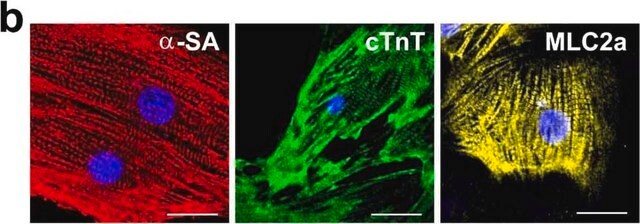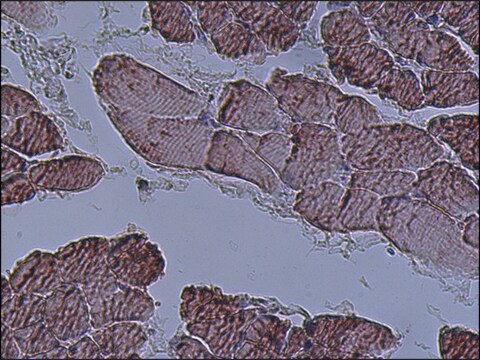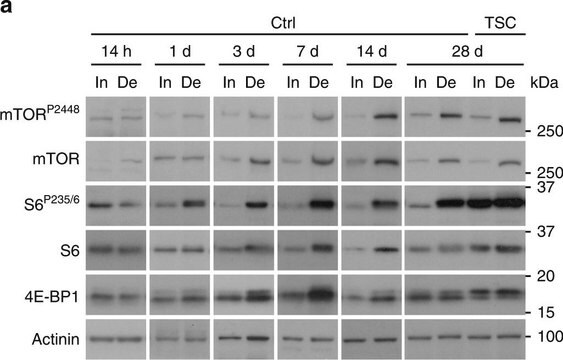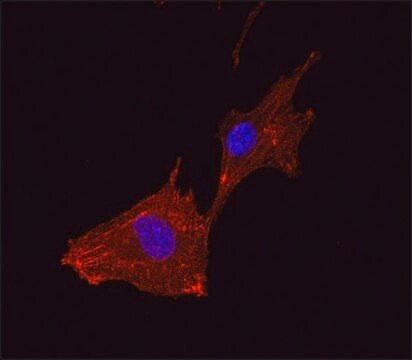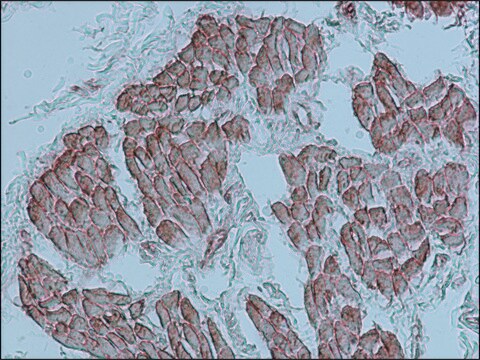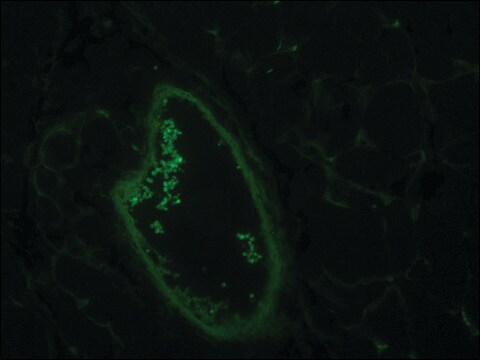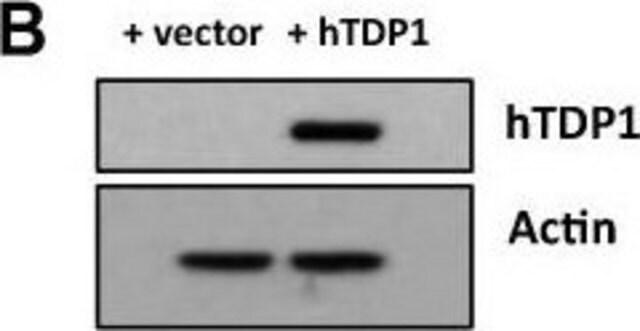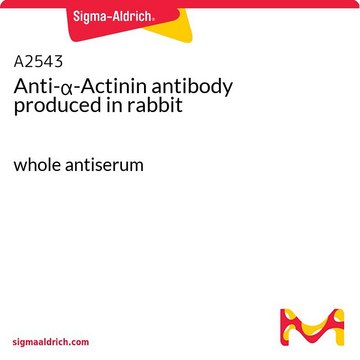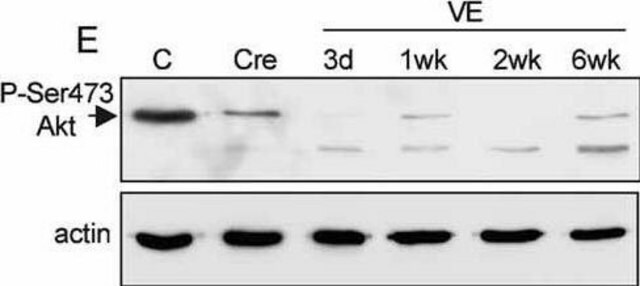推荐产品
产品名称
单克隆抗 肌动蛋白(α-肌节) 小鼠抗, clone 5C5, ascites fluid
生物源
mouse
共軛
unconjugated
抗體表格
ascites fluid
抗體產品種類
primary antibodies
無性繁殖
5C5, monoclonal
包含
15 mM sodium azide
物種活性
rabbit, carp, rat, sheep, guinea pig, human, snake, bovine, frog
技術
immunohistochemistry (formalin-fixed, paraffin-embedded sections): 1:500 using human skeletal and cardiac muscle
immunohistochemistry (frozen sections): suitable using human skeletal and cardiac muscle
indirect ELISA: suitable
western blot: suitable
同型
IgM
運輸包裝
dry ice
儲存溫度
−20°C
目標翻譯後修改
unmodified
基因資訊
human ... ACTA1(58) , ACTC1(70)
mouse ... Rwdd2a(69519)
rat ... Acta1(29437) , Actc1(29275)
一般說明
单克隆抗-α-肌动蛋白(小鼠IgM同种型)来源于小鼠骨髓瘤细胞与免疫小鼠脾细胞融合产生的杂交瘤。肌动蛋白是最保守的真核细胞蛋白之一,亚型显示>90%的整体序列同源性。在哺乳动物和鸟类中表达为六种亚型。六种异构体中的四种可代表肌肉组织的分化标记物。其他两种几乎存在于所有细胞中。
免疫原
兔横纹肌肌动蛋白。
應用
单克隆鼠抗肌动蛋白抗体作为大鼠背根神经节共培养的免疫沉淀蛋白的免疫印迹分析的负载对照。
大鼠单克隆抗肌动蛋白(心肌肌动蛋白)抗体可用于蛋白印迹和免疫组织化学应用。
大鼠抗肌动蛋白(α-肌动蛋白)单克隆抗体可用于
- 免疫荧光
- 免疫双标
- 双标记末端脱氧核苷酸转移酶dUTP末端标记(TUNEL)免疫荧光染色。
生化/生理作用
肌动蛋白是一种细胞骨架蛋白,可调节细胞运动、分泌、吞噬作用和胞质分裂。肌动蛋白的NH2-端可起到抗原作用。该末端还可以调节肌动蛋白相互作用,并且可以与肌球蛋白等蛋白质结合。
外觀
本品以腹水形式提供,含有 0.1% 叠氮化钠作为防腐剂。
其他說明
视图需查看肌动蛋白抗体选择指南,请访问www.sigmaaldrich.com/actin。
免責聲明
除非我们的目录或产品随附的其他公司文件中另有说明,否则我们的产品预期仅供研究使用,不得用于任何其他目的,包括但不限于未经授权的商业用途、体外诊断用途、离体或体内治疗用途或任何类型的消费或人类或动物应用。
未找到合适的产品?
试试我们的产品选型工具.
儲存類別代碼
10 - Combustible liquids
水污染物質分類(WGK)
WGK 3
閃點(°F)
Not applicable
閃點(°C)
Not applicable
其他客户在看
Forced myocardin expression enhances the therapeutic effect of human mesenchymal stem cells after transplantation in ischemic mouse hearts
Grauss RW, et al.
Stem Cells, 26(4), 1083-1093 (2008)
Monoclonal antibodies against muscle actin isoforms: epitope identification and analysis of isoform expression by immunoblot and immunostaining in normal and regenerating skeletal muscle
Chaponnier C and Gabbiani G
F1000Research, 5 (2016)
PEDF improves cardiac function in rats subjected to myocardial ischemia/reperfusion injury by inhibiting ROS generation via PEDF-R
Zhao Q, et al.
International Journal of Molecular Medicine, 41(6), 3243-3252 (2018)
PEDF and PEDF-derived peptide 44mer stimulate cardiac triglyceride degradation via ATGL
Zhang H, et al.
Journal of Translational Medicine, 13(1), 68-68 (2015)
Miranda Nabben et al.
Biochimica et biophysica acta, 1807(9), 1095-1105 (2011-05-14)
The function of uncoupling protein 3 (UCP3) is still not established. Mitochondrial uncoupling, control of ROS production, protection against lipotoxicity and protection against oxidative stress are functions classically discussed. To establish a role for UCP3 in these functions, we have
我们的科学家团队拥有各种研究领域经验,包括生命科学、材料科学、化学合成、色谱、分析及许多其他领域.
联系技术服务部门
